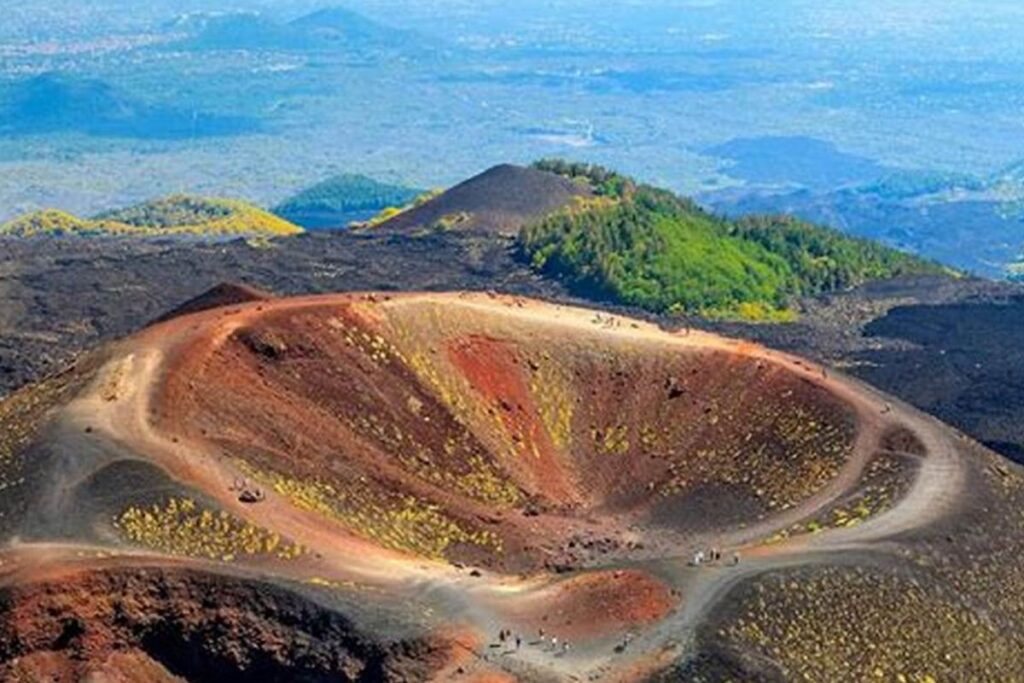Sicily, the largest island in the Mediterranean, is a treasure trove of history, culture, and natural beauty. Known for its diverse landscapes, ancient ruins, and vibrant culinary scene, Sicily offers a unique blend of experiences that cater to every type of traveler. Let’s delve into the various aspects that make Sicily a must-visit destination.
Location and Climate

Sicily is located at the southern tip of Italy, separated from the mainland by the narrow Strait of Messina. It is surrounded by the Mediterranean Sea, with the Ionian Sea to the east, the Tyrrhenian Sea to the north, and the Strait of Sicily to the southwest. The island’s strategic location has made it a cultural crossroads throughout history.
The climate in Sicily is typically Mediterranean, with hot, dry summers and mild, wet winters. Coastal areas experience more temperate conditions, while inland regions can see more extreme temperatures. The island enjoys plenty of sunshine year-round, making it an ideal destination for beachgoers and outdoor enthusiasts.
Historical Tapestry

Sicily’s history is a rich tapestry woven from the influences of various civilizations, including the Greeks, Romans, Byzantines, Arabs, Normans, and Spaniards. This diverse cultural heritage is evident in the island’s architecture, art, and traditions.
Ancient Greece: Sicily was once a major center of Greek civilization, with cities like Syracuse, Agrigento, and Selinunte playing key roles. The ruins of Greek temples, theaters, and other structures can still be seen today.
Roman Empire: The Romans conquered Sicily in the 3rd century BCE, and the island became an important part of the Roman Empire. Many Roman ruins, including villas, mosaics, and amphitheaters, are scattered across Sicily.
Byzantine, Arab, and Norman Periods: Following the fall of the Roman Empire, Sicily saw a succession of rulers, including the Byzantines, Arabs, and Normans. Each of these cultures left their mark on the island, contributing to its unique architectural and cultural heritage.
Spanish Rule: Sicily was part of the Spanish Empire from the late 15th century until the early 18th century, further enriching its cultural tapestry.
Key Cities

Palermo: The capital city of Sicily, Palermo is a bustling metropolis with a rich history and vibrant cultural scene. Key attractions include the Palermo Cathedral, the Norman Palace, and the Catacombs of the Capuchins. The city’s markets, such as Ballarò and Vucciria, offer a taste of local life and cuisine.
Catania: Located at the foot of Mount Etna, Catania is known for its baroque architecture and lively atmosphere. Highlights include the Catania Cathedral, the Roman Theater, and the bustling fish market, La Pescheria.
Syracuse: Once a powerful Greek city-state, Syracuse is home to remarkable ancient ruins, including the Greek Theater, the Roman Amphitheater, and the Ear of Dionysius. The island of Ortigia, the city’s historic center, is a charming area with narrow streets, baroque churches, and seaside views.
Taormina: Perched on a hill overlooking the Ionian Sea, Taormina is famous for its stunning views and ancient Greek theater, which is still used for performances today. The town’s medieval streets, boutique shops, and beautiful beaches make it a popular destination.
Agrigento: Known for the Valley of the Temples, a UNESCO World Heritage site, Agrigento boasts some of the best-preserved Greek temples outside of Greece. The town itself offers a glimpse into Sicily’s rich history and culture.
Culinary Delights
Sicilian cuisine is a delightful fusion of flavors influenced by the island’s diverse cultural heritage. The local dishes are characterized by fresh, seasonal ingredients and bold flavors. Key culinary highlights include:

Arancini: These delicious rice balls are stuffed with a variety of fillings, such as ragù (meat sauce), cheese, or peas, and then deep-fried to golden perfection.
Pasta alla Norma: A classic Sicilian pasta dish made with tomatoes, eggplant, ricotta salata cheese, and basil.
Cannoli: Perhaps the most famous Sicilian dessert, cannoli are crispy pastry tubes filled with sweet ricotta cheese and often garnished with candied fruit or chocolate chips.
Caponata: A flavorful eggplant dish made with tomatoes, celery, olives, capers, and a sweet-and-sour vinegar sauce.
Granita: A refreshing semi-frozen dessert made with sugar, water, and a variety of flavors, such as lemon, almond, or coffee.
Click here to browse Recipes from the Sicily Region
Agricultural Highlights
Agriculture is a cornerstone of Sicily’s economy, with the island producing a wide range of high-quality products. Key agricultural highlights include:

Citrus Fruits: Sicily is renowned for its citrus fruits, particularly its blood oranges, lemons, and mandarins. The fertile soil and favorable climate contribute to the exceptional quality of these fruits.
Olive Oil: The island produces some of Italy’s finest olive oil, characterized by its rich flavor and golden color. Sicilian olive oil is often used in local dishes and is highly prized by chefs and food enthusiasts.
Wine: Sicily is one of Italy’s premier wine regions, known for its diverse range of wines. Notable varieties include Nero d’Avola, Marsala, and Etna Rosso, produced from grapes grown on the slopes of Mount Etna.
Almonds and Pistachios: The island’s almond and pistachio crops are used in a variety of traditional sweets and pastries, such as marzipan and pistachio gelato.
Tourism and Major Attractions

Tourism is a major industry in Sicily, with visitors drawn to its rich cultural heritage, stunning landscapes, and vibrant cities. Major attractions and activities include:
Mount Etna: Europe’s highest and most active volcano, Mount Etna offers a range of outdoor activities, including hiking, skiing, and guided tours of the volcanic craters and lava fields.
Valley of the Temples: This archaeological site in Agrigento is home to some of the best-preserved Greek temples in the world, offering a fascinating glimpse into ancient history.
Palermo’s Markets: The bustling markets of Palermo, such as Ballarò and Vucciria, are vibrant hubs of local life, offering a wide range of fresh produce, street food, and artisanal goods.
Aeolian Islands: This volcanic archipelago off the northern coast of Sicily is known for its stunning natural beauty, crystal-clear waters, and charming villages. Popular activities include sailing, snorkeling, and exploring the islands’ unique landscapes.
Taormina’s Greek Theater: This ancient theater, with its breathtaking views of Mount Etna and the Ionian Sea, is still used for performances and events, offering a unique cultural experience.
Things to See and Do
Whether you’re interested in history, nature, or cuisine, Sicily offers a wide range of activities to suit all interests. Here are some top recommendations:

Explore Ancient Ruins: Visit the Greek temples in Agrigento, the Roman mosaics in Piazza Armerina, and the ancient theaters in Syracuse and Taormina.
Hike Mount Etna: Take a guided tour or hike up Mount Etna to explore its craters and lava fields, or visit one of the many wineries on its slopes.
Relax on the Beaches: Sicily boasts some of Italy’s most beautiful beaches, such as San Vito Lo Capo, Cefalù, and the secluded coves of the Zingaro Nature Reserve.
Taste Local Cuisine: Sample Sicilian specialties like arancini, pasta alla Norma, and cannoli at local trattorias and markets.
Visit Local Festivals: Experience Sicilian culture at festivals such as the Feast of Saint Agatha in Catania, the Infiorata flower festival in Noto, and the Taormina Film Fest.
Conclusion
Sicily, with its diverse landscapes, rich history, and vibrant culture, is a region that offers something for everyone. Whether you’re exploring ancient ruins, savoring local cuisine, or relaxing on stunning beaches, Sicily provides an unforgettable experience. This island’s unique blend of cultural influences and natural beauty makes it a must-visit destination for anyone seeking to discover the true essence of Italy.




